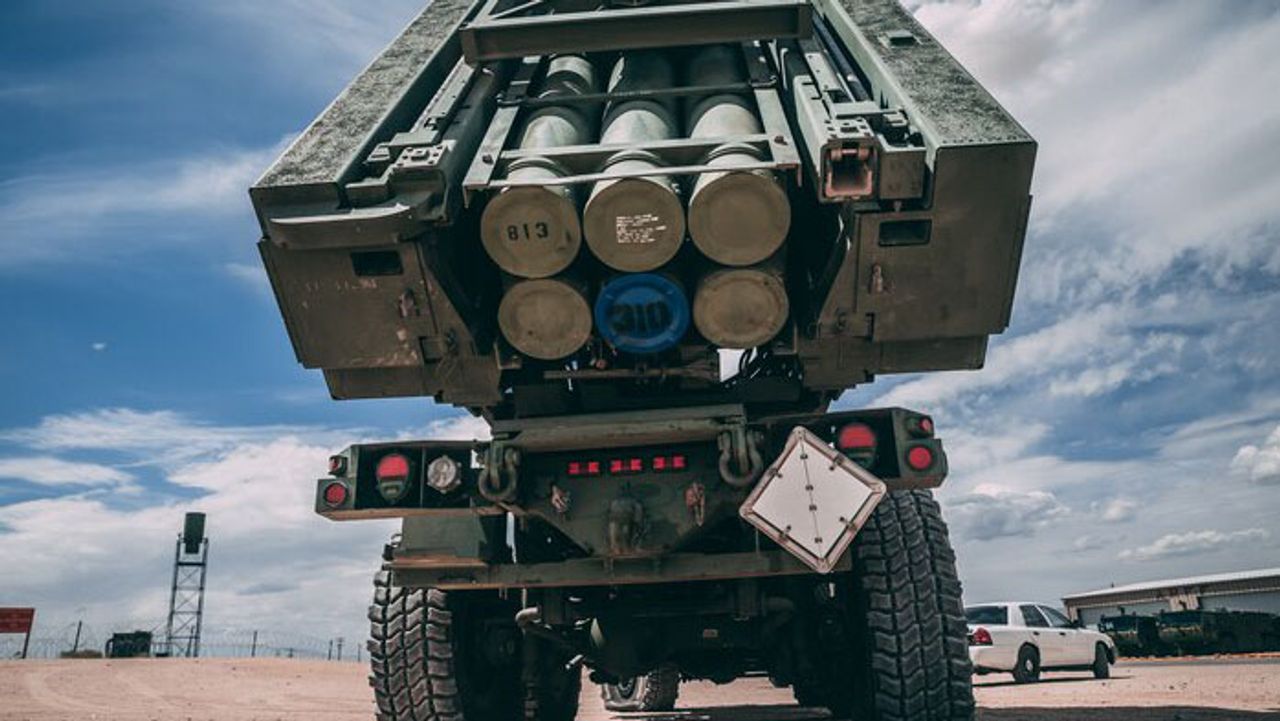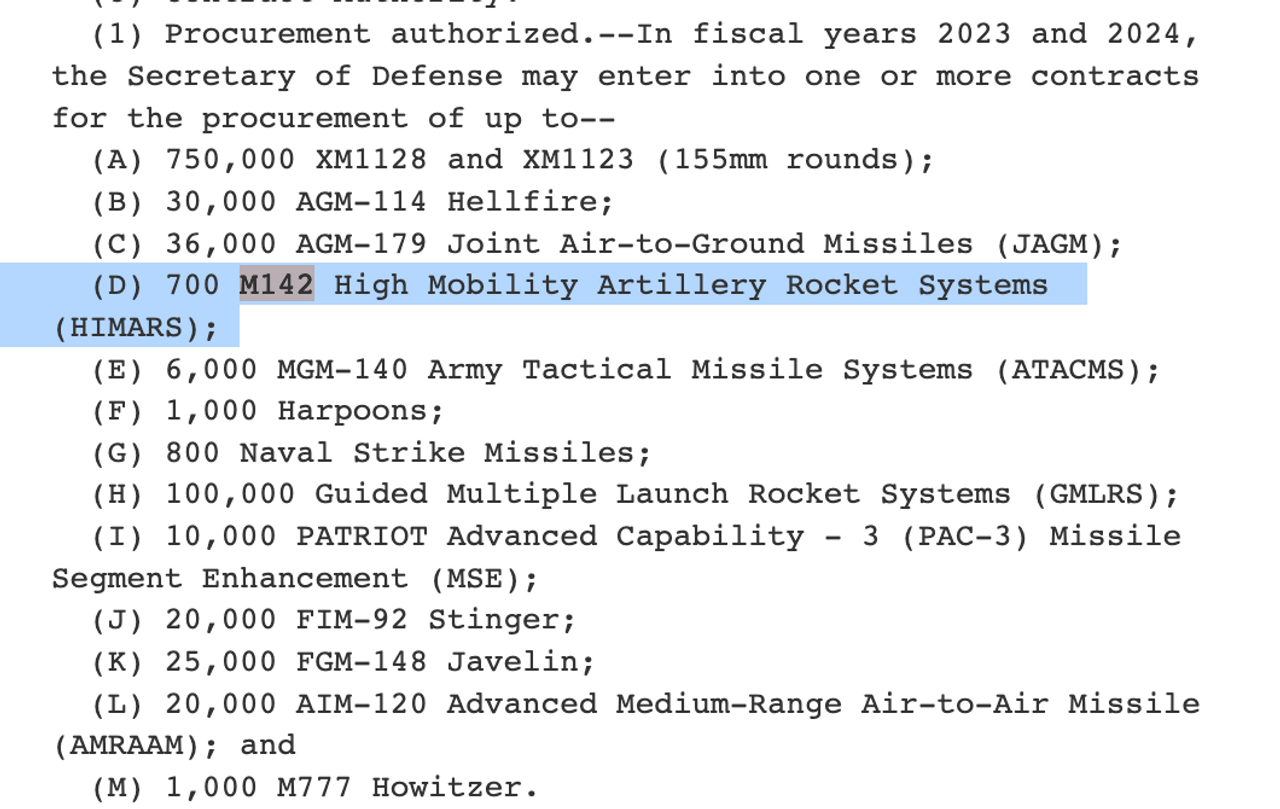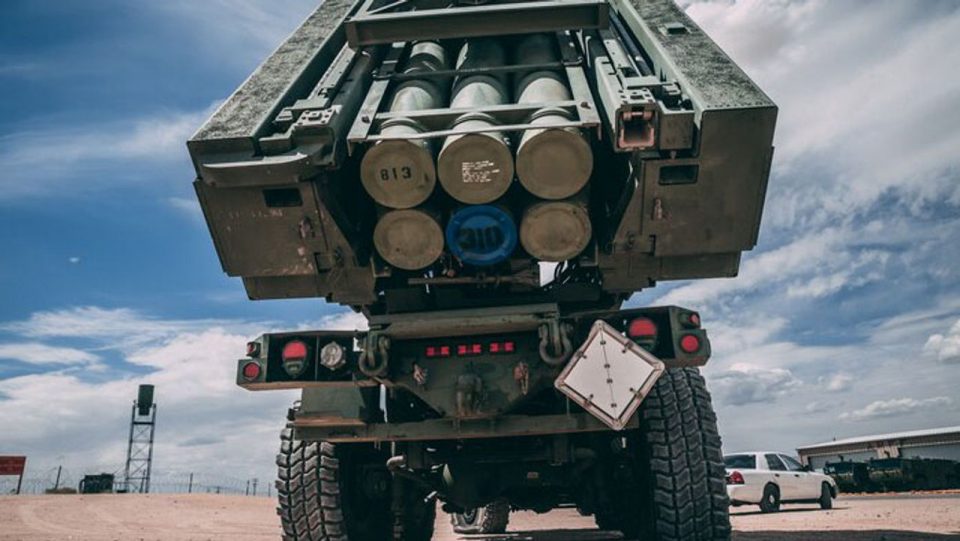Amid the escalating war with Russia in Ukraine and US plans for war with China, the United States is rapidly moving toward a wartime mobilization of its economy. It is doing so as the war provoked by the US and NATO and triggered by the Russian invasion of Ukraine rapidly metastasizes into a global conflict.
Last week, the two highest-ranking Republicans and Democrats on the Senate Armed Services Committee introduced a bill granting the Pentagon emergency wartime procurement powers, removing major peacetime limitations on arms purchases by the Pentagon and procuring missiles in wartime quantities.

In an amendment to the annual National Defense Authorization bill, the Senate Armed Services Committee’s Democratic chairman, Jack Reed, and the ranking Republican committee member, Jim Inhofe, proposed to increase US procurement of long-range missiles such as the HIMARS by 10 times or more.
The bill comes as the United States intensifies its involvement in its proxy war with Russia in Ukraine, while making it abundantly clear that it is seeking to provoke a war with China over Taiwan. In both conflicts, the type of long-range weapons being procured in massive quantities under the bill are seen as critical.
“Whether you want to call it wartime contracting or emergency contracting, we can’t play around anymore,” a senior congressional aide told Defense News.
Chillingly, the aide referred to “operational plans” against China, implying that the Pentagon has a timetable for war with the world’s most populous country. “It’s hard to think of something as high on everybody’s list as buying a ton of munitions for the next few years, for our operational plans against China and continuing to supply Ukraine,” the aide said.
The wartime procurement procedures would allow the Department of Defense to make non-competitive awards to arms manufacturers for contracts related to Ukraine, and remove restrictions requiring contractors to provide accurate cost data – measures intended to protect taxpayer funds.

The sheer numbers of armaments requisitioned by the bill are consistent with a full-scale war – or even two. The public text of the bill calls for the procurement of 700 HIMARS systems, the long-range missile launchers credited with turning the tide in the war in Ukraine.
To date, 16 HIMARS systems have been delivered and deployed in Ukraine. The number now being procured is more than 40 times greater than the number sent so far.
Since the HIMARS system first entered into deployment approximately 20 years ago, some 540 units have been built, averaging about 54 units per year. This means that the current bipartisan proposal would increase the production rate nearly twenty-fold.
The amendment procures 6,000 ATACMS missiles, capable of striking targets at a distance of hundreds of miles, and 100,000 of the GMLRS missiles fired by the HIMARS systems in Ukraine.
To date, the United States has provided 126 155mm howitzers to Ukraine. But the procurement for the 2023-24 budget year would secure an additional 1,000 units of the weapon.
The massively expanded military procurement takes place amid a years-long program to expand the United States’ nuclear arsenal, including the purchase of all-new intercontinental ballistic missiles, strategic bombers, and nuclear-capable submarines.
In June, a strategy document adopted by NATO pledged to prepare the alliance’s members “for high-intensity, multi-domain warfighting against nuclear-armed peer-competitors.”
In September, the Defense Department announced that the United States and its allies were planning to “expand their nations’ industrial base” for building bombs, rockets and artillery for the war with Russia in Ukraine.
In the name of “providing long-term support to Ukraine,” the the US and its allies pledged to massively escalate their wartime production of “ground-based long range fires, air defense systems [and] air-to-ground munitions,” the Pentagon wrote.
The plans to put the US economy and supply chain on a war footing comes against the backdrop of growing demands within the US political establishment for a wartime “mobilization.” On Tuesday, US Secretary of State Anthony Blinken claimed that the Chinese military was planning to seize Taiwan on a “much faster timeline,” amid the deepening Sino-American standoff over the Taiwan Strait.
The conflict between the United States and China was intensified in August by the visit to Taiwan by House Speaker Nancy Pelosi.
Elbridge Colby, one of the principal authors of the 2018 National Defense Strategy, called for a national “mobilization” against China. “Why are we not on a national mobilization footing?” Colby asked. “If we get in a war we will have to be, but by then it may be too late.”

Loading Tweet …
The calls for aggressively expanding the United States’ industrial base for wartime procurement comes against the backdrop of provocative war games launched by the United States throughout Europe.
On Monday, the Pentagon confirmed that the United States has placed the George H.W. Bush aircraft carrier battle group under NATO control as part of a major military exercise in the Mediterranean Sea.
Asked by a reporter Monday “what kind of message the US was trying to send to Russia by doing this,” a Pentagon spokesperson replied, “It just shows the power of the Alliance,” adding “we will defend every square inch of NATO territory.”
The maritime operation, known as Neptune Strike, takes place simultaneously with a US nuclear war training exercise known as Steadfast Noon, in which B-52 bombers and F-16 fighters simulate dropping atomic bombs over Europe.

Loading Tweet …
Amid escalating tensions, strikes by the Russian and Ukrainian military targeting civilian infrastructure raged on both sides of the border between the two countries on Sunday, Monday and Tuesday.
On Sunday, RIA Novosti reported that 16 explosions were heard throughout the Russian city of Belgorod, some 25 miles from the Ukrainian border. That same day, the administrative building in the Russian-occupied city of Donetsk in the Donbas was destroyed by shelling.
These strikes were followed Monday and Tuesday by a series of aerial attacks on civilian infrastructure in Ukraine, including in Kiev, and Ukrainian authorities reported that one third of the country’s power stations were damaged.
US-aligned military analysts gloated that the attacks on civilians depleted the store of weapons available to Russian forces, with the UK’s Ministry of Defense declaring, “Russia’s defense industry is probably incapable of producing advanced munitions at the rate they are being expended.” It added that Russia’s depletion of its long-range missiles “is likely to constrain their ability to strike the volume of targets they desire in future.”
In other words, the US and its NATO allies see Ukrainian civilians as little more than cannon fodder, soaking up Russia’s long-range missiles and procuring an advantage on the battlefield for the NATO-aligned forces.
In March, President Joe Biden said the US is not “going to send in offensive equipment” to Ukraine because it would trigger “World War III.” Over the subsequent months, the United States has flooded Ukraine with armored vehicles, long-range missiles, drones and even aircraft. On October 7, Biden warned that the escalating war in Ukraine risks “Armageddon” – referring to nuclear war.
Last month, Russian President Vladimir Putin threatened to launch a nuclear strike if the United States or NATO seeks to attack either the Russian homeland or territories annexed by Russia last month.
On October 6, one day before Biden’s “Armageddon” comment, Ukraine President Volodymyr Zelensky at a meeting of an Australian think tank called for NATO to carry out preemptive strikes on Russia to prevent the “possibility of Russia using nuclear weapons.”
“What should NATO do? Eliminate the possibility of Russia using nuclear weapons,“ Zelensky said. “We need preventive strikes, so they know what will happen to them if they use nukes, and not the other way around.”
Zelenzky’s comments raised questions as to whether he was advocating that the United States carry out a nuclear attack on Russia as the only way to cripple Russian nuclear capabilities.
The escalation of the US war drive is in keeping with the Biden administration’s National Security Strategy, issued last week, which pledged to expand the US military, “integrate” economic life with war-making, and “win the competition for the 21st century” in what it called the “decisive decade.”
In his letter announcing the strategy, Biden declared that “Our National Defense Strategy relies on integrated deterrence: the seamless combination of military… and non-military… domains—and we must too.”
The White House’s fact sheet on the document declares that “The Biden-Harris Administration has broken down the dividing line between domestic and foreign policy.”
As the Biden administration escalates its plans for full-scale war with Russia and China, it is clear that these war plans will entail a massive attack on the social, economic and political rights of the working class, which will be told it must accept poverty wages and intolerable working conditions in the name of the war effort.
The relentless escalation of the war must be stopped! We urge all of those who agree with this perspective to contact us today.


